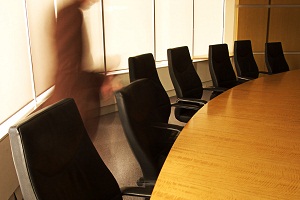
How to overcome problems that stifle creativity in the workplace was the focus of one workshop at the NZ Creativity Challenge. What were some of the suggestions to emerge?
 How to overcome problems that stifle creativity in the workplace was the focus of one of a number of 90-minute workshops at the recent NZ Creativity Challenge conference in New Plymouth. The workshop presenter, Shona Glentworth, managing director of Implement & Associates, identified two main problems that were impeding workplace creativity.
How to overcome problems that stifle creativity in the workplace was the focus of one of a number of 90-minute workshops at the recent NZ Creativity Challenge conference in New Plymouth. The workshop presenter, Shona Glentworth, managing director of Implement & Associates, identified two main problems that were impeding workplace creativity.
To begin with, Glentworth suggested that society is too focused on blaming someone for mistakes that occur. “A lot of businesses are very careful about not making mistakes, or not being seen to making mistakes, and that creates systems and processes that are about covering themselves,” she said. However, creative people realise that it’s OK to make mistakes, as long as you learn from them.
“Businesses do still have to manage risks so it’s a balance between the two, but I think the more creative businesses that you see will be those that will give it a go,” Glentworth added.
An over-reliance on technology could also damage creativity, according to Glentworth. “Technology means that we can find anything we need to know, we can find templates, see what other people are doing … and I think it’s almost becoming a mind-set: ‘Oh yeah give me template for that’,” she explained. However, while borrowing ideas can be useful, it’s imperative to make them work for your own organisation.
So what can workplaces do to release creativity from its stranglehold? “It’s around stopping and thinking around what do we want to achieve, allowing time for things to be developed, to be tried, and tested and developed, and then put in place,” Glentworth said. If you’re strapped for time, gathering a number of people around a table to discuss solutions is a good idea.
Retaining an open perspective, asking ‘how can we…’, rather than dismissing a problem as too difficult, is also vital, Glentworth said. “It’s a way of living life, I think, ‘How can we do this?'”
And then it’s a matter of asking the right questions in order to define a problem clearly. “Sometimes you can have something a bit big and waffly that’s hard to define, and hard to come up with solutions for, but if you break it down to smaller components, it’s much easier to get some heads around the table to talk about it,” she said.
But Glentworth also emphasised the importance of imagination. “What you sometimes get is that businesses are limited by, ‘Well everybody does this’, instead of imagining … you know, in some perfect place in the future, ‘What would it be like’,” she said.